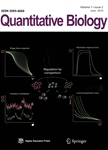Artificial neural network approach for analyzing mutual coupling in a rectangular MIMO antenna
Artificial neural network approach for analyzing mutual coupling in a rectangular MIMO antenna作者机构:Department of Electronics and Communication Engineering VRSiddhartha Engineering College Vijayawada India K. JAGADEESH BABU J. LAKSHMI NARAYANADepartment of Electronics and Communication Engineering St. Ann'sCollege of Engineering and Technology Chirala India Department of Electronics and Communication Engineering JNTUCollege of Engineering Hyderabad India Department of Electronics and Communication Engineering AcharyaNagarjuna University Guntur India
出 版 物:《Frontiers of Electrical and Electronic Engineering in China》 (中国电气与电子工程前沿(英文版))
年 卷 期:2012年第7卷第3期
页 面:293-298页
学科分类:080904[工学-电磁场与微波技术] 0821[工学-纺织科学与工程] 0808[工学-电气工程] 0809[工学-电子科学与技术(可授工学、理学学位)] 08[工学] 0805[工学-材料科学与工程(可授工学、理学学位)] 082104[工学-服装设计与工程] 0702[理学-物理学]
主 题:flexible substrate multiple input multipleoutput (MIMO) systems artificial neural networks (ANNs) mutual coupling impedance bandwidth
摘 要:A wideband rectangular patch antenna resonat- ing at 3.5 GHz and 8 GHz frequencies is developed on a flexible substrate, which can be used for wearable applications. The proposed antenna gives a wide impe- dance bandwidth of 116%, operating from *** to 9.5 GHz, covering most of the ultra-wideband (UWB) operating frequency range. A two-element multiple-input multiple-output (MIMO) system is developed using the proposed antenna, and the mutual coupling between the two antennas for various separations and frequencies is analyzed by using artificial neural networks (ANNs). The neural structure is trained by using different ANN algorithms and a comparative study is made between them. It is shown that, quasi-Newton (QN) and quasi- Newton multi layer perceptron (QN-MLP) algorithms are better in terms of training, testing errors, and correlation coefficient.



